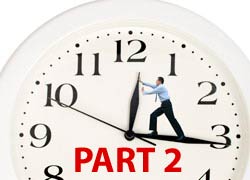In the first part of this two-part article, we discussed the entity that is the COT report. In this second part we’ll discuss how to put the report to best use when looking to trend and or position trade forex trades.
The COT (commitment of traders) report is a weekly publication, therefore logically it’s of more use and relevance to trend traders, it is regarded as the ultimate market sentiment indicator. Traditionally the main use for the report is to identify what’s termed as “market extremes”; simply find extreme net long or net short positions as identifying these positions may signal that a market reversal is just around the corner. Let’s simplify it a stage further, if everyone is long a currency, you need to ask yourself the question “who is left to buy?” Could the right answer be no one? And if everyone is short a currency, who is left to sell? Different question, same answer.
One of the major problems with the forex market is the lack of a volume indicator. Since there is no forex exchange such as in the Nikkei or the NYSE, volume statistics on the entire FX market are not available. The COT report, tracking the weekly currency and commodity futures allocations of the major speculators and commercial hedgers, is an excellent substitute for the volume indicator, and it should therefore be an inseparable item of any technical trading strategy.
There are three main categories to analyse when gauging the COT report.
Open Interest
The amount of open futures contracts that are being held, it is the total volume of open contracts in the market, but not the transactions.
Reportable Positions
The positions held by institutions that meet the reporting requirement of the CFTC. These are the major players in the CBOT, and their choices are usually backed by hordes of analysts and their studies.
Non-Reportable Positions
These cover everyone bog contained in the previous criteria, they are also termed small speculators. Of reportable positions, non-commercial includes all investors such as hedge funds, brokerage firms, investment banks and other related firms. Commercial open interest is created by firms that have the desire to receive or deliver the underlying.
The report provides data on the percentage of long or short contracts as a percentage of the total, on the number of traders in all three categories with positions on a currency, and changes in open interest vis a vis the previous reporting period.
Five main uses of the COT report for FX traders
1. Create a currency portfolio based on the COT report
If the non-commercial sector is overall long the USD what should be the criteria in deciding the currency pairs that will be included in our portfolio in such a situation? We could short AUD/USD and EUR/USD and be long USD/JPY. We are aiming to gain from the appreciation of the USD whilst limiting the volatility. This will reduce the volatility of our portfolio, consequently reducing the potential return from our investment, but it does create a longer-lasting, more resilient position.
2. Exploiting reversals to create a portfolio
It’s possible to arrange FX portfolios to profit from trend reversals as signalled by COT reports. However, traders should carefully hedge positions by trading uncorrelated pairs. The major changes in the strength of a trend, or its reversal on a permanent basis, are always noted by changes in open interest, and institutional positioning, traders need to avoid trying too hard to catch “bottoms and tops”.
3. The COT report as a longer term volume indicator
A prudent use of the COT report is as a volume indicator as this can’t be generated by conventional technical analysis. Traders can refuse to act when a technical signal fails to be confirmed by a similar movement (signalled in increasing open interest) in the COT report. For an uptrend, expect a corresponding rise in open interest, and for a down trend, a corresponding fall. It possible to use indicators for this purpose, the MACD, or Stochastics, PSAR, or DMI can all be utilised on the COT report data.
4. Using ‘flips’ to predict market reversals
One way of exploiting the COT report is by taking note when net positions switch from long to short and vice versa, and predicting forex market reversals on that data. When net positioning of the non-commercial sector switches to long, traders would use the development as a signal for buying euros, perhaps underpinned with some input from other sources of technical analysis. This method can produce results that are much more reliable than those generated by pure technical analysis. Percentage values are simple to recognise and easier for recognising position flips.
5. Using extremes to gauge market exhaustion
Comparing long or short positioning with historical extremes is beneficial in identifying market extremes. There are no absolute values that indicate a bought-out, or sold-out currency, but as the COT positioning hits these apparent values, there’s a significant chance of a reversal. However, there’s no hard and fast rule or reason to expect that positioning cannot exceed a previously registered high or low, before reversing. But if traders engage their overall intelligence then the extremes reported by the COT report have much greater value than that reported by price based technical analysis alone.






Comments are closed.